Next stop: Arequipa for some Spanish lessons. We boarded our overnight bus and were no sooner seated than out hostess handed us each a bingo card and promised a free return trip to Cusco for the winner! Fortunately neither of us won. It may have messed up our travel plans a little.
We missed the first few numbers whilst we tuned our ears in, but we soon got into the swing of it and it was very good practice for our Spanish number skills! We were a little disappointed not to have the English 'two fat ladies 88' style, but that may have made it a little tricky anyhow. One game of bingo, a quick sandwich and then it was lights out for the night, arriving in Arequipa at 6am.
The usual explanation of Arequipa's nickname is the very pale volcanic stone, known locally as silla, that has been used for so many of its buildings. Many of these date back to early colonial times but the tradition of using this pock-marked stone continues. Throughout the town there are many of these substantial white buildings, often with impresively carved and decorated doorways.
However, Our Spanish teacher Mabel advanced an alternate theory; the climate and surroundings made this town very appealing to european settlers so the proportion of Spanish origin folk is considerably higher than other Peruvian cities, hence the White City.
The climate may be pretty good but the city's disadvantage is that it is surrounded by volcanoes and sits within an active earthquake zone, which has made itself felt many times in the city's history. Thus although many buidlings are quite old, most have had substantial rebuilding over time. The perfect cone of El Misti, the closest active volcano, dominates the skyline of the city as it rises to a height of 5800m and is only 17km from the town.
It last showed minor signs of activity in 2001 when an earthquake hit the town but is currently slumbering. The proximity to high mountains was no doubt the reason why, to our surprise, we actually spotted a condor wheeling in the sky above the town! Sadly, no camera handy to record the sight.
Our home here in Arequipa is a room in an apartment owned by a lovely Peruvian couple, Jose & Ines whose daughter, Evelin, normally runs a hostel in town. However she has recently sold it and bought another place which she is in the process of doing up and planning to open next month. In the meantime, Jose and Ines are letting out two rooms in their apartment.
We're here for a fortnight whilst taking Spanish lessons, but other people keep appearing for a few days and disappearing again. The family are really friendly and have made us feel very much at home. Pecana, the cat, has taken real shine to Tony and loves to curl up with him, especially if he's trying to do something else.
Cats, it seems, are the same the world over! After living in hostels for the last few months, it's really nice to be in a proper home and two weeks in one place seems like real stability! We're living in a suburb called Selva Alegre (Happy Wood: not as green as it sounds!). It's about a 20 minute walk into town and about 40 minutes back up the steep hill, or a cheap taxi ride if we're feeling tired!
Our Spanish still has far to go to be classed as fluent, but the combination of talking with Jose and Ines plus our lessons with Mabel mean that we are using Spanish much more now. There are just the two of us in the class so there's no sitting back and hoping not to be asked questions! Generally half of the lesson, at least, is purely conversational, which is really good for our speaking and listening skills and then we get on to trying to improve some of the grammar...
Outside of school we've explored the city, taking in some of the sites. The most impressive of Ariquipa's buildings is actually more of a town within the town. The Convent of Santa Catalina occupies a whole double block. Surrounded by high, imposing walls it is recognised as Peru's most important religious building. The convent was founded by a wealthy woman who chose her nuns from the richest Spanish families. However, it appears that the young women who joined the order, far from denouncing everything, kept living it up in the style to which they had become accustomed.
Admittedly they lived in a closed order, never able to return to or meet with the outside world, but the ratio of servants to nuns was 3:2! It is a maze-like place with streets, courtyards, plazas and gardens and is incredibly colourful. The brilliant colours of the walls of streets and courtyards are stunning in the sunlight.
Many of the cells are quite spacious with their own kitchens and courtyards and it appears there was even a market in selling on the best cells to other nuns! We'd certainly be tempted by one if they were up for sale today! These days there are still 30 nuns in this convent but they live within a small, separate section of the complex in a new building, leaving the rest to the tourists!
One of the convent rooms is a place of rememberance for the nuns who died there and to this end they have a portrait of each dead nun, in her dead state. An unusual art collection.
The colours used in the convent relate to those in other colonial houses in Arequipa. Traditionally, the walls of the first courtyard are painted a deep orange-red, denoting the area for meeting and entertaining friends.
The second courtyard, painted a beautiful shade of blue, is for the family, and the white area of the final patio is for the ordinary folk and servants. The nuns took vows of silence and were not allowed to meet with anyone from outside (other than through the 'locutorio' where they could speak to, but not see, their family), so we guess the orange-red area was a somewhat quieter area than that of most houses.
We saw this colour scheme again when we visited Casa del Moral, a huge and amazing house, now owned by a bank. It suffered a lot of damage in the 1868 earthquake and was then left to fall apart even more until it was finally bought and restored in the 1940s. Sadly, at this point in its history, the family split it into two houses and sold one part to the fire brigade who knocked it down and built their very unimpressing fire station.
In Arequipa we also encountered, again, our old friend Gustav Eiffel. We took ourselves on a fair old walk across town to the bridge that he designed to cross the valley of the Rio Chili in the south of the city. This once verdant area now has much modern and recent housing around it and has become quite a desirable middle-class area, but still has quite a verdant area within the flood plain that the Puente Fierro (Iron Bridge) crosses. Whilst we were standing admiring it, a local helpfully approached us to ask what we were looking for and seemed quite bemused that anyone should come to look at the bridge. I don't think they get many tourists in those parts!
The climate here in Arequipa is warm and dry, so it seems ironic that at this point in our journey we've both come down with infections! Jen arrived and immediately developed a sore throat, cold and hacking cough that makes it sound as though she smokes 60 a day. Despite downing numerous tablets and bottles full of medicine, the congestion just won't shift. Tony has managed to avoid catching whatever it is, but yesterday his tummy, which has been a bit on and off for weeks, decided that enough was enough. After several hours of his stomach contents constantly emptying through one oriface or another, the poor thing was quite drained and exhausted.
Fortunately overnight it seems to have settled a bit and today he has been able to eat and drink a little. I went to school without him and came back with lots of advice like 'drink coca tea!' (it's the cure for everything!). Fortunately Mabel and others at the school also gave me advice about what to ask for at the chemist and he's now dosing up on pro-biotics to fill his tummy full of good flora and fauna and some other stuff to stop the spasms. The things people put themself through to avoid Spanish lessons!
In the meantime Mabel and I had an interesting lesson. She took advantage of it being girls only to discuss the side of pregnancy and childbirth not usually discussed! She has a little girl of 8 months and had quite a horrific time of giving birth - the sort of stuff they don't tell you in the books apparently. We also talked about extended families, complications of families, death and such like. Yesterday we talked about Day of the Dead, how and why it is celebrated. We've had some really good conversations with her, which have developed and stretched our language whilst being informative and interesting at the same time. We'll quite miss her when we move on.
The White City
Tuesday, March 16, 2010
 Arequipa, Peru
Arequipa, Peru
Other Entries
-
75Like Birmingham but better!
Jan 1065 days prior Córdoba, Argentinaphoto_camera64videocam 0comment 2
Córdoba, Argentinaphoto_camera64videocam 0comment 2 -
76Wines, Bikes, Barnsley and Bernard O'Higgins
Jan 1659 days prior Mendoza, Argentinaphoto_camera45videocam 1comment 1
Mendoza, Argentinaphoto_camera45videocam 1comment 1 -
77Over the Andes to Santiago
Jan 2352 days prior Santiago, Chilephoto_camera95videocam 0comment 8
Santiago, Chilephoto_camera95videocam 0comment 8 -
78Carnival Time in Paradise Valley!
Jan 2748 days prior Valparaíso, Chilephoto_camera89videocam 0comment 6
Valparaíso, Chilephoto_camera89videocam 0comment 6 -
79City of churches, craft stalls and penguins!
Jan 3144 days prior La Serena, Chilephoto_camera55videocam 1comment 1
La Serena, Chilephoto_camera55videocam 1comment 1 -
80More Marys than you can shake a skull stick at.
Feb 0638 days prior San Pedro de Atacama, Chilephoto_camera91videocam 3comment 1
San Pedro de Atacama, Chilephoto_camera91videocam 3comment 1 -
81Mountains, lakes, salt plains & altitude sickness
Feb 0836 days prior Uyuni, Boliviaphoto_camera82videocam 1comment 5
Uyuni, Boliviaphoto_camera82videocam 1comment 5 -
82Dead people, dead trains and dead electrics!
Feb 1034 days prior Uyuni, Boliviaphoto_camera30videocam 0comment 3
Uyuni, Boliviaphoto_camera30videocam 0comment 3 -
83Let the festivities begin (but not in the convent)
Feb 1331 days prior Potosi, Boliviaphoto_camera78videocam 0comment 0
Potosi, Boliviaphoto_camera78videocam 0comment 0 -
84No sugar but lots of water and... dinosaurs!
Feb 1925 days prior Sucre, Boliviaphoto_camera61videocam 0comment 5
Sucre, Boliviaphoto_camera61videocam 0comment 5 -
85Possibly the highest capital city in the world...
Feb 2321 days prior La Paz, Boliviaphoto_camera89videocam 1comment 4
La Paz, Boliviaphoto_camera89videocam 1comment 4 -
86Shining Lake Titicaca (when it isn't raining).
Feb 2618 days prior Copacabana, Boliviaphoto_camera47videocam 1comment 2
Copacabana, Boliviaphoto_camera47videocam 1comment 2 -
87Despite the name, it's not always sunny here!
Feb 2816 days prior Isla del Sol, Boliviaphoto_camera51videocam 0comment 0
Isla del Sol, Boliviaphoto_camera51videocam 0comment 0 -
88Incas, Pre-incas and a load of willies.
Mar 0511 days prior Puno, Peruphoto_camera113videocam 0comment 0
Puno, Peruphoto_camera113videocam 0comment 0 -
89Road blocks, demos and a scenic journey to Cusco
Mar 0610 days prior Cusco, Peruphoto_camera76videocam 0comment 5
Cusco, Peruphoto_camera76videocam 0comment 5 -
90Touring the Sacred Valley
Mar 079 days prior Ollantaytambo, Peruphoto_camera50videocam 0comment 8
Ollantaytambo, Peruphoto_camera50videocam 0comment 8 -
91Visiting the Inca sites around the city.
Mar 097 days prior Cusco, Peruphoto_camera46videocam 0comment 3
Cusco, Peruphoto_camera46videocam 0comment 3 -
92The White City
Mar 16 Arequipa, Peruphoto_camera92videocam 0comment 2
Arequipa, Peruphoto_camera92videocam 0comment 2 -
93Strange markings at Dead Bull!
Mar 237 days later Toro Muerto, Peruphoto_camera32videocam 0comment 0
Toro Muerto, Peruphoto_camera32videocam 0comment 0 -
94Colca Canyon 1: Snow and the Ice Maiden
Mar 259 days later Chivay, Peruphoto_camera17videocam 0comment 2
Chivay, Peruphoto_camera17videocam 0comment 2 -
95Colca Canyon 2: Watch out, condors about!
Mar 2711 days later Cabanaconde, Peruphoto_camera56videocam 1comment 1
Cabanaconde, Peruphoto_camera56videocam 1comment 1 -
96Colca Canyon 3: Hot and Passionate
Mar 2812 days later Arequipa, Peruphoto_camera21videocam 0comment 0
Arequipa, Peruphoto_camera21videocam 0comment 0 -
97More lines and symbols but this time they're BIG!
Mar 3115 days later Nazca, Peruphoto_camera41videocam 0comment 2
Nazca, Peruphoto_camera41videocam 0comment 2 -
98Sun worshipping through the years
Apr 0419 days later Trujillo, Peruphoto_camera62videocam 0comment 2
Trujillo, Peruphoto_camera62videocam 0comment 2 -
99We go in search of GOLD!
Apr 0722 days later Chiclayo, Peruphoto_camera58videocam 0comment 4
Chiclayo, Peruphoto_camera58videocam 0comment 4 -
100Sun, surf and a very loud children's fairground
Apr 1126 days later Máncora, Peruphoto_camera22videocam 0comment 3
Máncora, Peruphoto_camera22videocam 0comment 3 -
101In search of exotic animals: we find iguanas
Apr 1328 days later Guayaquil, Ecuadorphoto_camera21videocam 0comment 1
Guayaquil, Ecuadorphoto_camera21videocam 0comment 1 -
102We arrive and dive.
Apr 1631 days later Puerto Ayora, Ecuadorphoto_camera64videocam 2comment 1
Puerto Ayora, Ecuadorphoto_camera64videocam 2comment 1 -
103We set sail, eventually.
Apr 1732 days later Bartoleme, Ecuadorphoto_camera46videocam 0comment 4
Bartoleme, Ecuadorphoto_camera46videocam 0comment 4 -
104Iguanas in all their many forms.
Apr 1833 days later Santa Fe Island, Ecuadorphoto_camera32videocam 0comment 3
Santa Fe Island, Ecuadorphoto_camera32videocam 0comment 3 -
105Not all the animals here are friendly.
Apr 1934 days later San Cristobal, Ecuadorphoto_camera8videocam 0comment 1
San Cristobal, Ecuadorphoto_camera8videocam 0comment 1 -
106Albatross, fresh albatross!
Apr 2035 days later Espanola, Ecuadorphoto_camera29videocam 0comment 1
Espanola, Ecuadorphoto_camera29videocam 0comment 1 -
107Jen has mixed feelings about stingrays!
Apr 2136 days later Floreana, Ecuadorphoto_camera11videocam 0comment 1
Floreana, Ecuadorphoto_camera11videocam 0comment 1 -
108That's the way, A-a A-a, I like it!
Apr 2237 days later Isabela, Ecuadorphoto_camera25videocam 1comment 2
Isabela, Ecuadorphoto_camera25videocam 1comment 2 -
109Big Boy Diego struts his stuff and we fly out.
Apr 2338 days later Puerto Ayora, Ecuadorphoto_camera10videocam 0comment 1
Puerto Ayora, Ecuadorphoto_camera10videocam 0comment 1 -
110In the dangerous city we have too many cocktails
Apr 2540 days later Quito, Ecuadorphoto_camera31videocam 0comment 2
Quito, Ecuadorphoto_camera31videocam 0comment 2
Comments
2025-05-22
Comment code: Ask author if the code is blank

 Arequipa, Peru
Arequipa, Peru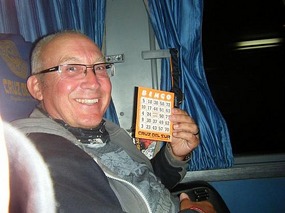
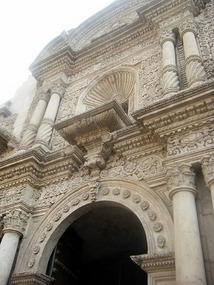
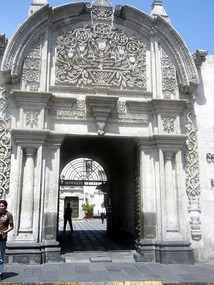
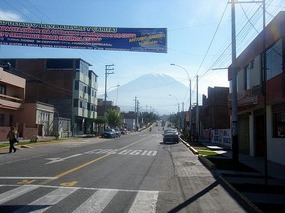
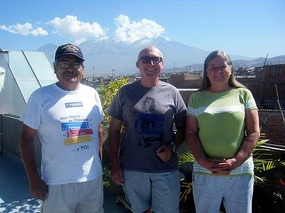
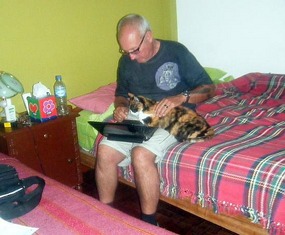
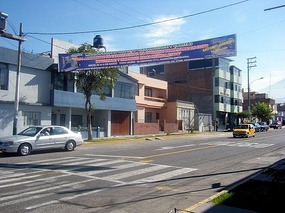
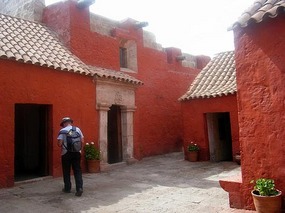
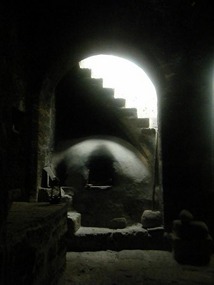
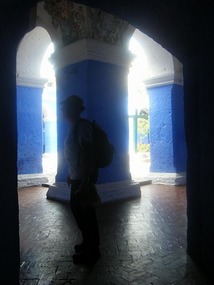
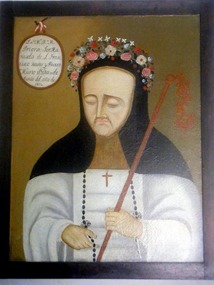
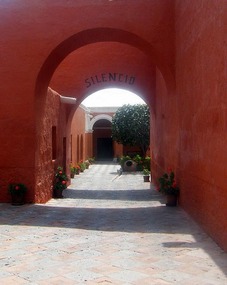
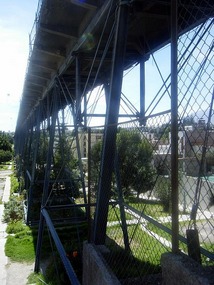
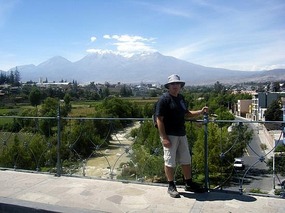
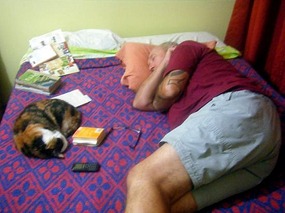
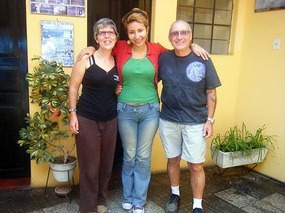





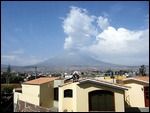
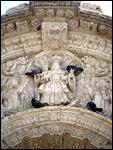
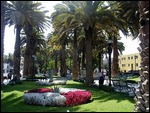
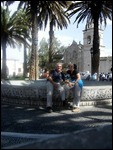
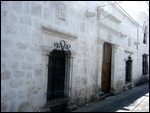
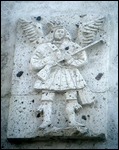
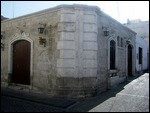

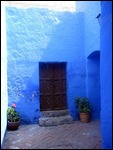
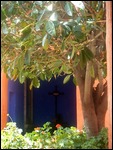
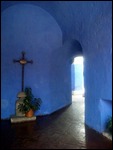
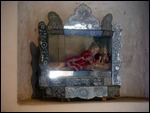
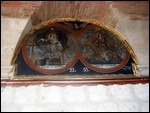
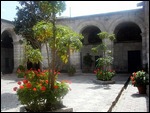
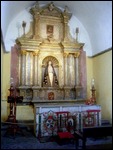
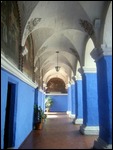
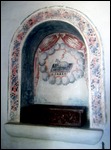
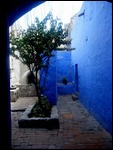
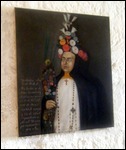
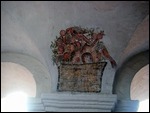
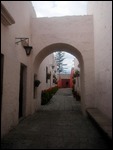
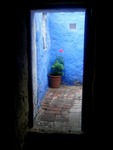
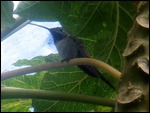
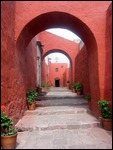
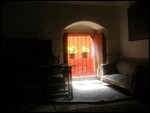
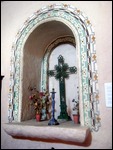
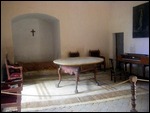
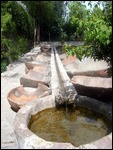
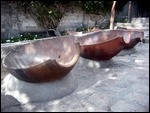
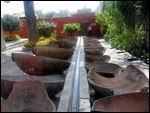
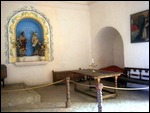
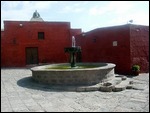
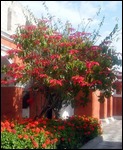
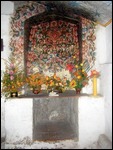
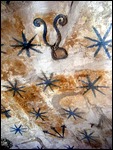
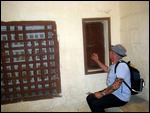
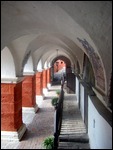

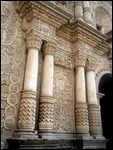
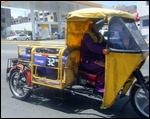
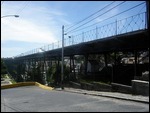
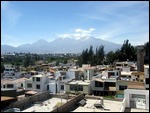

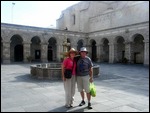
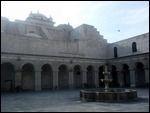
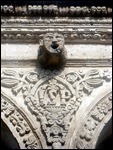

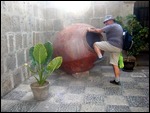
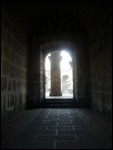
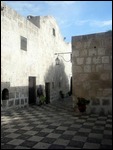

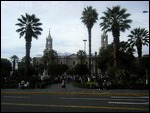
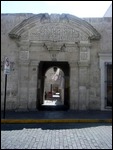
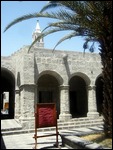

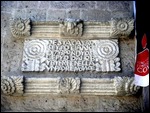
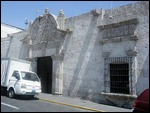
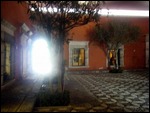
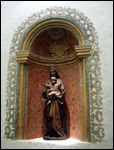

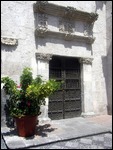
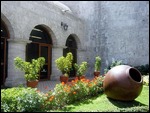
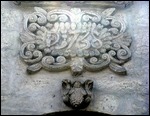
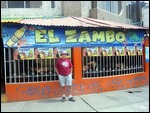
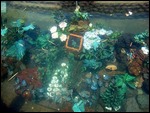
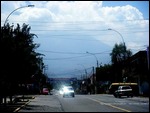
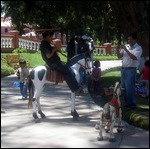
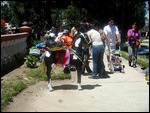
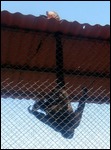
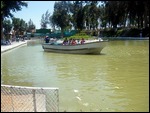

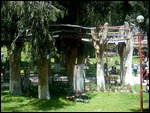
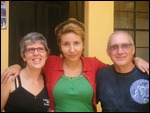
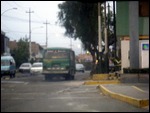
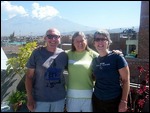

grindrodkaz
2010-03-29
Hey hope you are both feeling better, it is not much fun being ill especially when you are not in your own bed,,,, and you must be fluent in Spanish by now!
jenandtony
2010-03-30
Nosotros ambos estamos bien ahora. Aún no estamos con fluidez en español, aunque Jen habla mucho mejor que yo. Mi vocabulario es muy limitado y todas los gentes aqui hablan demasiado rapido. Yo tengo un muy bien acento, pero es un acento Ingles. Pero tenemos tres meses más para perfeccionar...